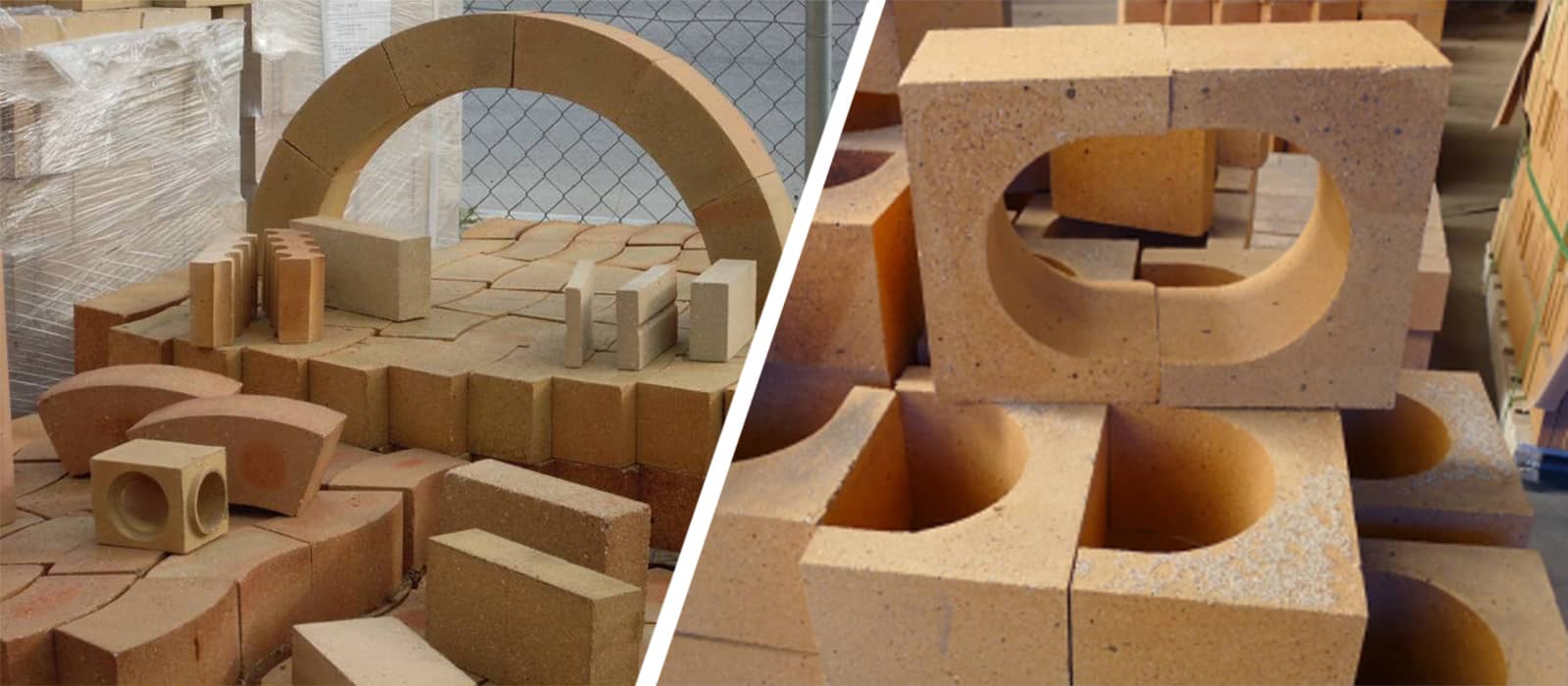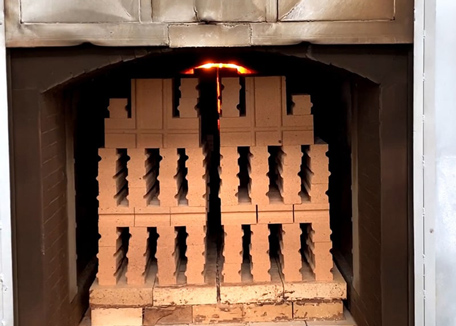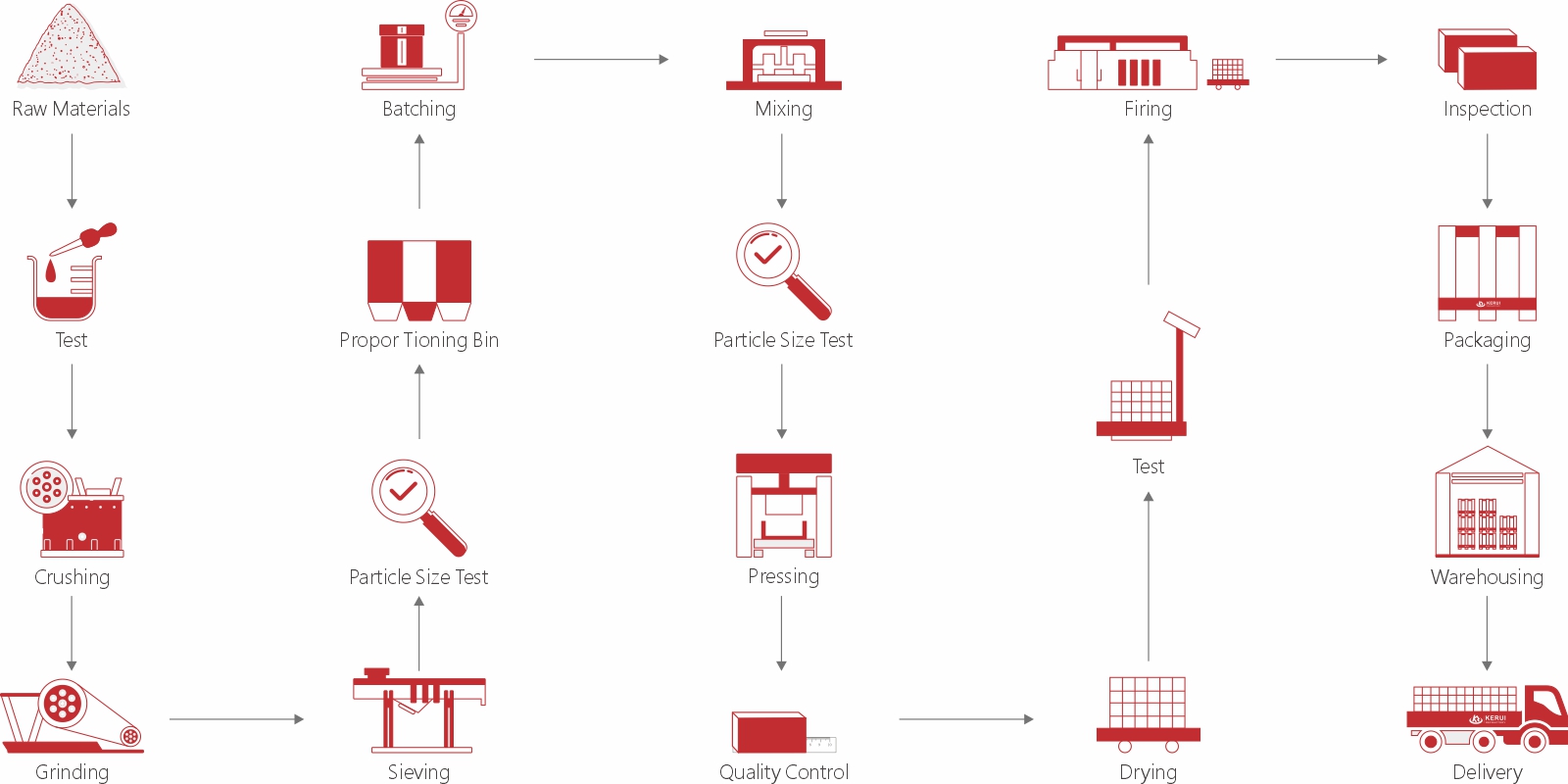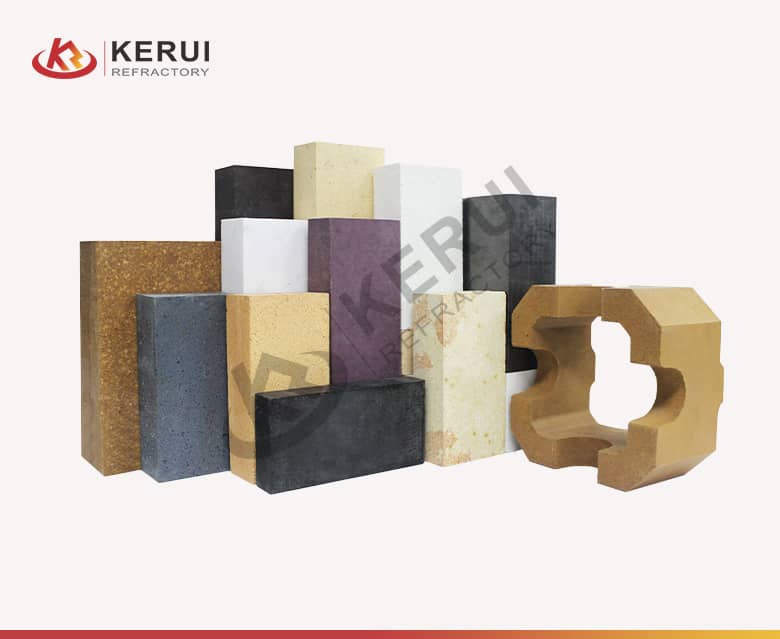What are fire bricks? We also call fire bricks refractory bricks. This fire brick material can resist high temperatures without undergoing any appreciable change in structural properties. Besides, refractory bricks are resistant to high temperatures, wear and chemical attacks. Therefore, we often use it for the lining of industrial equipment such as high-temperature furnaces, iron furnaces and glass kilns.

What are Fire Bricks Made From?
Fire bricks are a special refractory material that is usually composed of a variety of raw materials and processed through a specific manufacturing process. Its main components include the following materials.
- Clay: clay is one of the most commonly raw materials for refractory bricks. It has good plasticity. Besides, it can form a strong ceramic structure after processing and heating.
- High alumina materials: high alumina materials are rich in aluminum oxide (Al2O3) and have excellent high working temperatures. For example, high alumina bauxite, high alumina cement and high alumina sand.
- Silica materials: silica materials are rich in silicon dioxide (SiO2). Such as silica refractory bricks. Therefore, it has excellent high temperature resistance and corrosion resistance. Quartz sand, silica sand and silica are all siliceous materials.
- Magnesia: magnesia is another common fire brick raw material. It has a good high working temperature and alkali resistance. Therefore, we often use it in high-temperature furnaces and refractory coatings.
- Corundum: corundum is a material with high hardness and high melting point. Moreover, it also has excellent compressive strength. In addition, it can be natural corundum ore or artificially prepared.
These are what is a fire brick made from or made of. In addition, different types of refractory fire bricks can have different characteristics and application ranges depending on the raw materials and formula ratios used. Depending on the customer’s specific application needs, Kerui can also add other additives and modified materials. In this way, we can improve the characteristics of refractory bricks.

Fire Bricks Production Process


Prepare the required raw materials according to the formula requirements of refractory bricks. Such as clay, high alumina materials, siliceous materials, magnesium oxide, etc. We screen, crush and mix the raw materials to ensure uniformity of ingredients and appropriate particle size.
The mixed raw materials are fed into the molding machine for molding. At the same time, by applying pressure, we form into a refractory brick body with the desired shape and size.
In this fire bricks manufacturing process, we need to dry the formed refractory brick body to remove moisture. The purpose of drying is to prevent cracking and deformation during high-temperature sintering. Normally, Kerui uses heating drying through drying equipment.
We need to sinter the dried refractory brick body at a high temperature to form a hard structure. Moreover, the sintering temperature and time are controlled according to the specific refractory brick recipe and requirements. During the sintering process, a chemical reaction occurs whereby the particles combine and form the structure of the refractory bricks.
Like checking lightweight insulating fire bricks, we also need to inspect the quality of refractory bricks. We test the size, appearance, physical properties and chemical composition of the firebrick refractory. So the fire brick company of Kerui can ensure that products meet standard requirements.
We will package and properly store fire bricks of acceptable quality. Generally speaking, common packaging methods include wrapping in plastic film or stacking bricks on wooden pallets. During storage, we should take care to prevent the bricks from moisture, direct sunlight or mechanical extrusion.

Conclusion
The actual performance of refractory bricks will also be affected by factors such as the use environment, thermal stress and heating rate. In addition, in special application scenarios, customers may also use other high-temperature refractory materials. Such as ceramic fiber and refractory castables. If you need specific refractory brick performance parameters, please leave your requirements in the message box or follow us on Facebook. We will reply to you within 24 hours.
